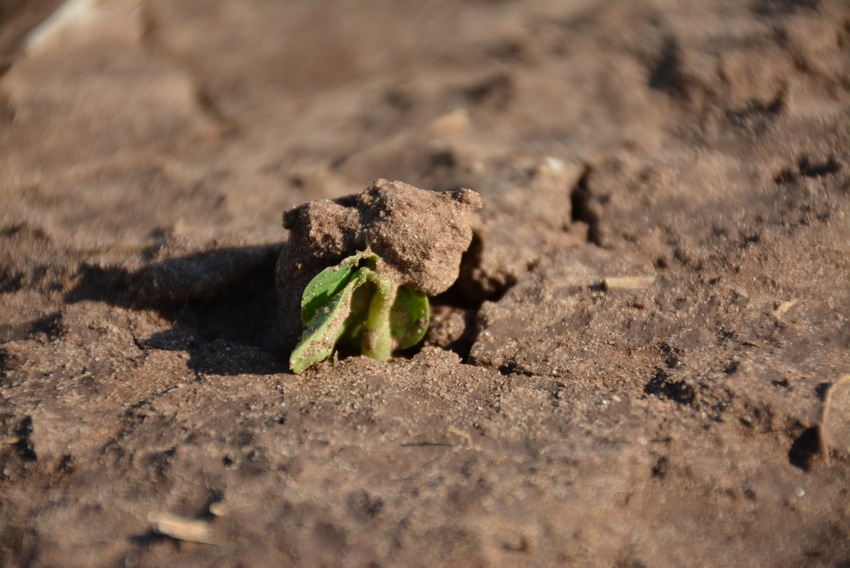
May showers have stalled planting efforts on the Texas High Plains, where around 4.5 million acres of cotton are expected to be planted in 2019.
“We planted 4.81 million acres in 2018, so our acres are down a little this year,” says Steve Verett, Plains Cotton Growers (PCG) executive vice president. But continuous rainfall may dampen 2019 expectations. “Nothing we've heard reported this year indicates a reduction in planted acres, especially in the northern Panhandle, but with this weather, this is changing daily.
See, FOV4 poses a potential threat to Texas cotton
“Most of the growers in the northern High Plains would like to have this crop planted no later than the 15th of May. Well, that’s four days away. Their final plant date is May 31 and we know they won’t plant past then.”
So, what will happened to those acres if they don’t get planted to cotton? Verett expects growers will plant short-season corn or grain sorghum. “Before this weather, we felt like we would still be looking at something around 4.5 million acres, but the jury is still out.”
The High Plains isn’t the only region where recent rainfall has squelched droughthy conditions. An active weather pattern nationwide has sustained historically low drought coverage, with only a few areas of the U.S. experiencing dryness or moderate to severe drought, according to the April 30, 2019, National Drought Summary.
While preplant moisture had growers optimistic at the beginning of the season, depressed markets along with the trade turmoil and now the weather concerns, has growers now more cautiously optimistic, says Verett. “I talked to a guy who farms in Parmer County and in Dallam and Hartley counties, and they're very concerned with these temperatures about what they have planted so far.” The high in Dallam County on May 10 was 43 degrees with an overnight low of 38 degrees.
But Verett is hopeful the old adage is going to prove true: “In West Texas, if you don’t like the weather stick around a few days, and it will change.
“We’re hopeful it will warm up and allow us to get a crop planted and established before it gets too late.”
FOV4
While the High Plains is known for its upland cotton, Verett says over the last couple of years there has been an increase in grower interest in planting Pima cotton. But before purchasing or planting Pima cotton, Plains Cotton Growers is cautioning producers to check their seed source to avoid spreading a seedborne pathogen called FOV4, Fusarium oxysporum f. sp. vasinfectum Race 4.
“Once this fungus is introduced to a field, it’s there forever,” says Dr. Tom Isakeit, professor and Extension specialist, field crops, Department of Plant Pathology and Micobiology.
FOV4, easily spread by infected seed and movement of infested soil, if introduced to the area via infected planting seed, would take at least five years for the populations to build to a point where symptoms would be readily identifiable, said Dr. Terry Wheeler, Texas A&M AgriLife Research plant pathologist, in a PCG-May 8 press release. The introduction of the disease on the High Plains would significantly limit the opportunity to maintain commercial seed production and negatively impact yields in infected fields, she adds.
FOV4 was first discovered in California’s San Joaquin Valley in 2003 and has since spread to the far west corner of Texas in El Paso and Hudspeth counties.
“We advise not to plant any Pima seed from California or the El Paso Valley. Other sources, both domestic and international, cannot be guaranteed to be FOV4-free,” Wheeler said in the release. “The first field that shows FOV4 shuts down this whole area from an upland cotton planting seed production perspective.”
“We are not trying to discourage anyone from planting Pima cotton or any other crop,” says Verett, “we’re just trying to caution everyone of the risk factors involved and that there is no resistance in upland cotton varieties to FOV4.”
Varieties grown in Arizona and Israel have been acceptable from a FOV4 perspective, says Verett.
Both upland and Pima list the source of their seed on their tags. “Growers need to be aware of their seed source and questioning where it came from.
“FOV4 is not going to be transmitted here and then blow up in a year and wipe out the upland cotton. It doesn’t work that way. It’s a slow process,” says Verett. “We just want to make everyone aware that we need to be as diligent possible not to spread the infection or help it spread any quicker than it may anyway.”
About the Author(s)
You May Also Like






